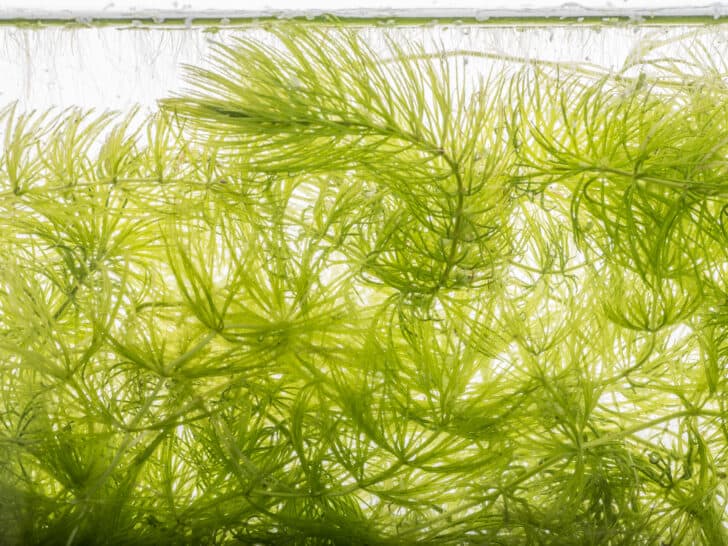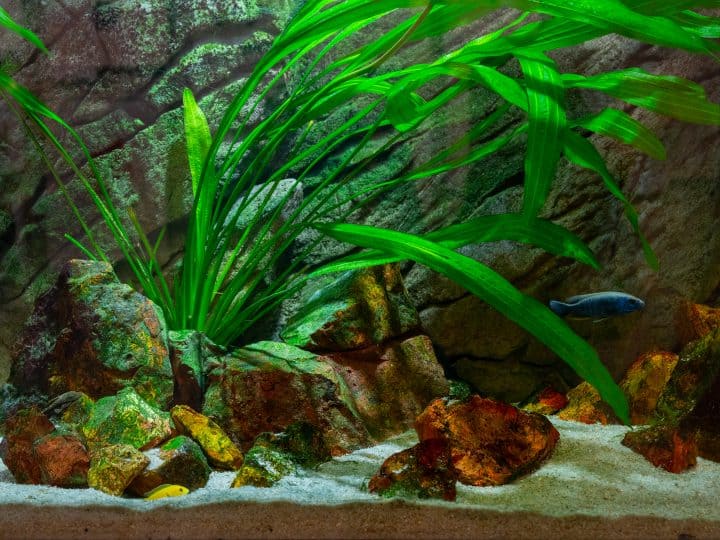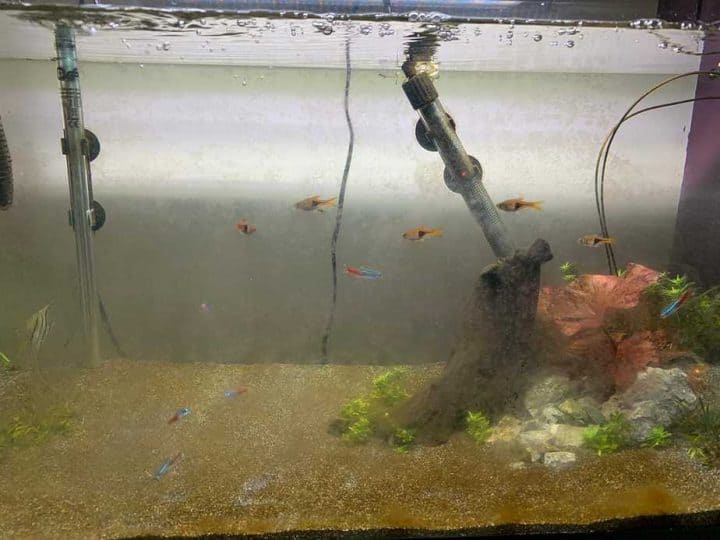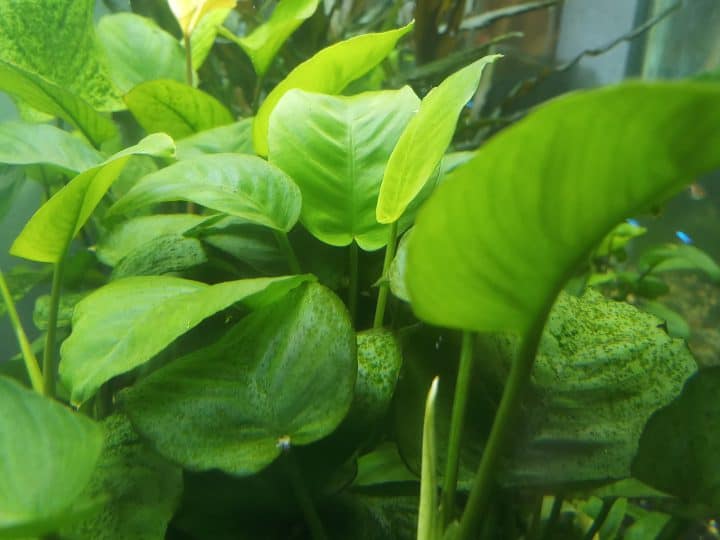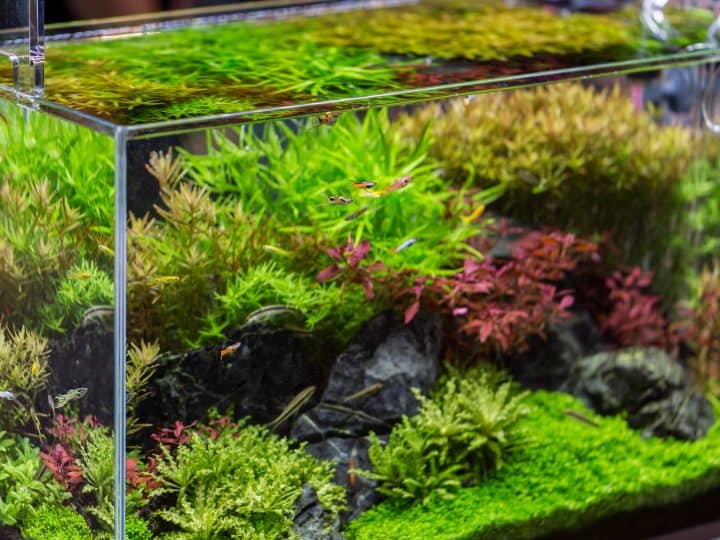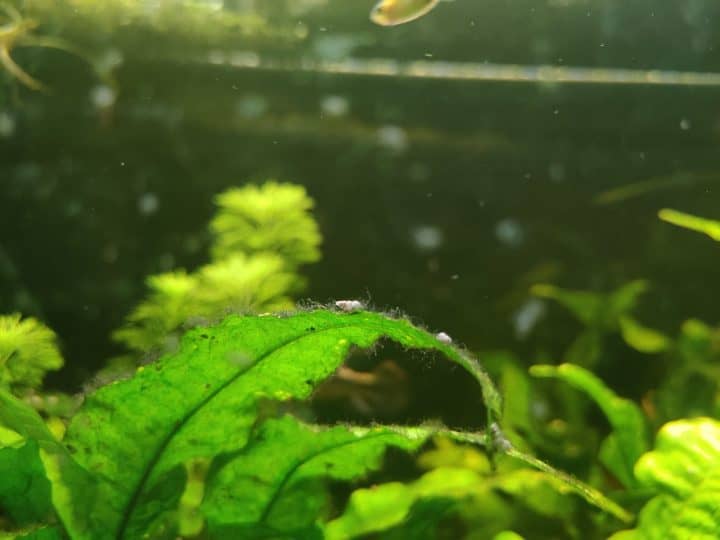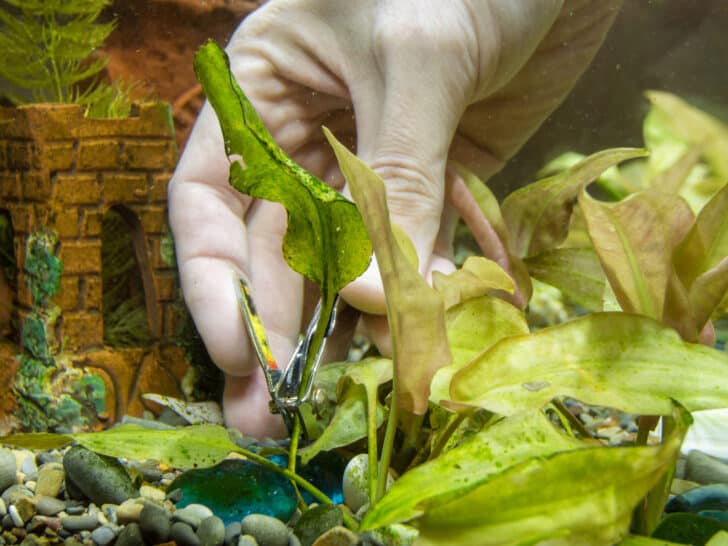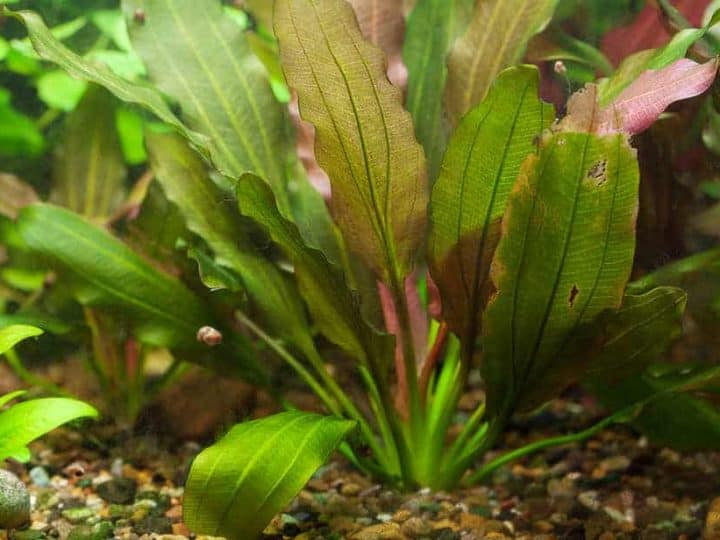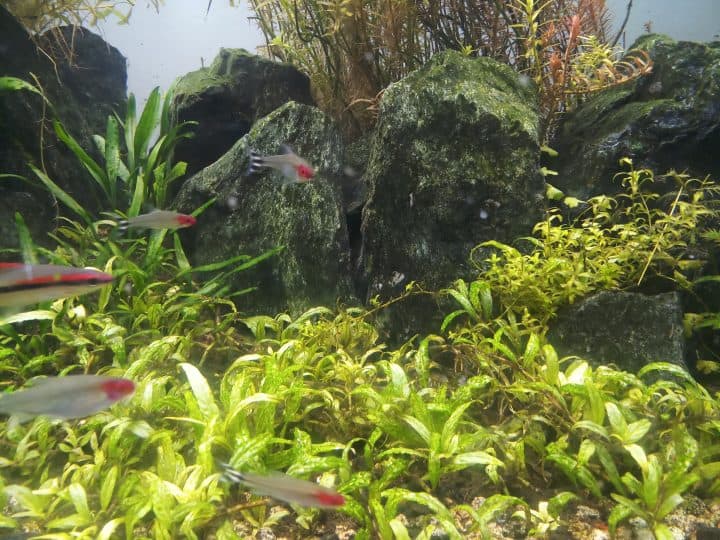Live aquarium plants are a welcome addition to any tank. In fact, many aquarium keepers choose to add plants to their water because of their known benefits. I personally love plants and have many live plants in all my tanks. But can plants kill your fish? I was curious so I did my research and found the answer.
Quick Answer
In some cases, if plants aren’t taken care of, they can even end up killing your fish. Some plants are not meant for your fish or your tank and will create health issues for your pet. Other times, plants can overgrow in your tank and bring harm to your fish.
In this post, we’ll talk about the various ways plants can potentially kill your fish. We’ll give you the information you need so you can safely plant and maintain your tank.
Plants are great if you want to create a natural and habitable environment for your fish. They filter the water in your tank and recreate the conditions of your pet’s natural habitat with their foliage. They look appealing in aquariums and can improve the health of your fish. Still, while there are many benefits to having aquarium plants, there can be downsides.
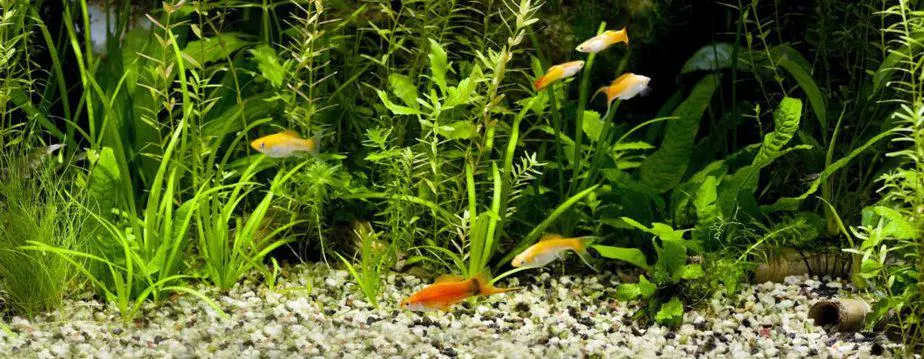
Ich and Aquarium Plants
Most fish owners know about Ich, it’s a common disease that can infect and kill your fish. But did you know that Ich can be transferred to your plants as well? Once your water is contaminated with Ich, your plants and your fish are at risk. Anything in your water from rocks, plants, or even decorations can be contaminated by the parasite. If you don’t treat your plants and the water your fish will die.
So you want to stop the spread of infection before it leads to deadly results. Normally, fish will have white spots of clumps on their body if they are infected. They will eat less, swim less, and overall be less active. When you notice any of these signs, you need to take action so the disease won’t continue spreading. At this point, your tank and your plants have likely been infected.
Getting Rid of Plant Ich
To treat your fish and get rid of the disease from your plants, you’ll have to put your fish and plants in quarantine. When you have your fish in their own separate tank, start treating the infected plant tank. Salt is an effective form of medication. You can use a salt treatment for a few weeks. You can also raise the temperature of your tank if your plants can handle it.
After the quarantine period is over the Ich should die without a host. Change the water and rinse off any decorations or gravel before you put your fish back in the tank.
Plant Rot and Ammonia
Another potential danger posed by plants is rot. If your plant isn’t getting enough light or nutrition, they will start to wilt and eventually rot. This is not good for the water quality in your tank. Rotted plant material can decay in your aquarium and build up ammonia in your tank. As ammonia builds up, the ammonia turns into nitrite. Nitrite, in high levels, is toxic to your fish.
When a plant is healthy and well taken care of, it absorbs and neutralizes ammonia to keep your tank water healthy for your fish. When you don’t take proper care of your plants, or if you let dead plant debris float in your tank, you risk your fish’s health. Ammonia build-up is natural when you are cycling a tank. This allows good bacteria to grow and maintain the conditions of your water.
But once you add your fish into an aquarium you want these levels to be consistent and low. You don’t want more nitrites in your water. To prevent any of this from happening, make sure your plant is getting the care it needs. Give it the amount of light it needs and look into specific care tips for your plant. Every plant is different and has varying care requirements.
If your plant is doing well, make sure you are pruning your plants. Some fauna needs to be trimmed. Any leaves trimmed should be immediately removed from your tank so they won’t rot.
Which Plants are Suitable for Aquariums
When you choose a plant for your tank, make sure it can survive in an aquarium environment. Live plants are great for your fish and your tank habitat, but some plants shouldn’t be submerged in water. If you put the wrong type of plant in your tank you can cause health issues for your pet. Sometimes this has to do with the plant itself. The leaves might not be okay for your fish to eat. Mostly though, the type of plant you get is a major factor in tank health.
You want to get a plant that is either completely submersible or can survive both in and out of water. Many aquatic plants are grown as emersed plants. This method of growth helps them grow faster and can save sellers money. Emersed plants are typically found dipped in water. Their roots stay in the water and their leaves are exposed to air. Submersible plants, on the other hand, grow completely under the water
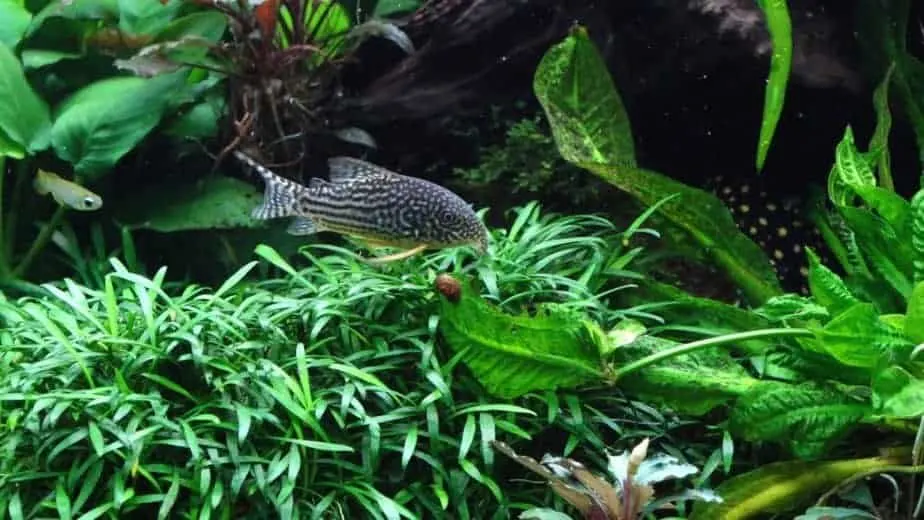
Submersible plants are better suited to aquaretic tanks, but some aquatic plants can be grown both submersed and emersed. When you put emersed plants in your tank, make sure they can grow submersed. Once you are sure they can live in an aquarium, you can begin planting them. Your plant won’t grow right away. It needs to get use to growing fully in water. So expect this process to take anywhere from a week up to a month.
You’ll plant will look like it is dying, at first. It will shed and produce a lot of decaying material. Make sure to clean all of this up so your water quality doesn’t suffer and end up killing your fish. But don’t take the plant out of the water. You have to give it time to transition into a submerged plant. It will look different when it grows back, but it should be able to thrive in your tank without bringing harm to your pet.
Overgrowth and over-planting your tank
One final danger in planting tanks lies in overgrowth. Sometimes, your plants grow out of control, or you end up putting too many plants in your tank. Most people would think this is a good thing. Plants play a big role in filtering out waste and other toxins from your tank. In addition, they also oxygenate your water.
So wouldn’t it be healthier to have more plants in your tank? Unfortunately, this is not always the case. You don’t want too many plants in your tank at once otherwise your fish could die.
The reason for this is known as biological oxygen demand. Fish, good bacteria, and your plants need oxygen to survive. Of course, plants help create oxygen flow in your tank. They keep your tank environment healthy and breathable. But when there are too many plants in your tank, these benefits are diminished.
Plants are not constantly producing oxygen. At some points in the day, they need to rest. This is where potential danger can occur. When your plants are resting they still need to consume oxygen to survive. At the same time, your fish and good bacteria need to breathe as well. Since oxygen is not being created during this period, there is a chance that the oxygen will run out, or that there won’t be enough for your fish.
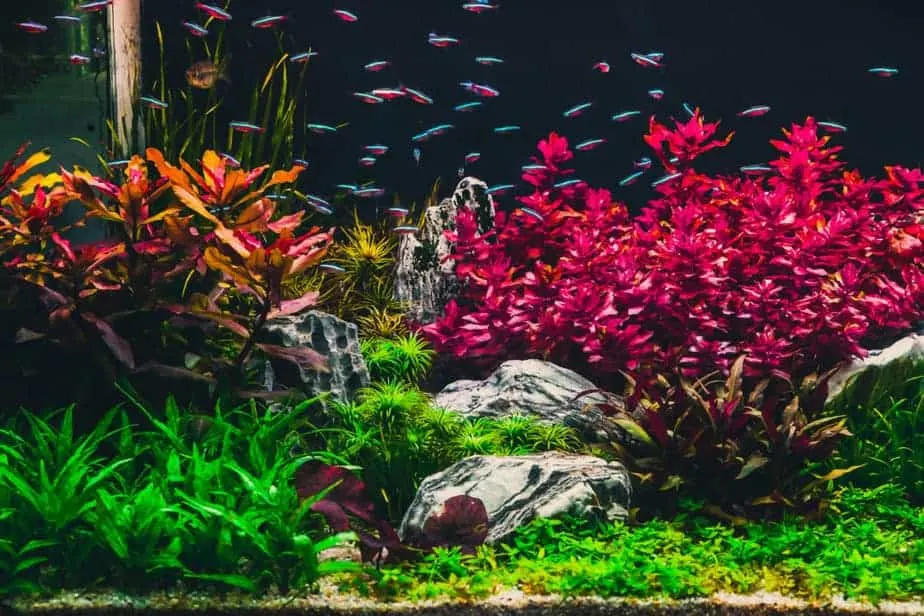
Cutting back on plant growth
With an overgrowth of fauna, all the organisms in your tank compete for the oxygen left in your tank. Your plants are likely to take up all the air and your fish will run out of air and die. The best thing to do in this situation is trim your plants. You want your fish to be able to breathe. Plants are great to have in a tank, but when you let them grow unchecked the results are deadly. It’s better to have a moderate amount of fauna.
The other good thing about having less plants is tank maintenance. Your tank will be easier to clean and upkeep with less fauna. Sometimes, it can be hard to prune several plants at once. Or, you could miss some of the debris your plant leaves behind. As we mentioned before, you don’t want plant material rotting in your tank. A more manageable amount of plants keeps these issues from occurring. So, consider this when you decide to fill your aquarium with plants.

